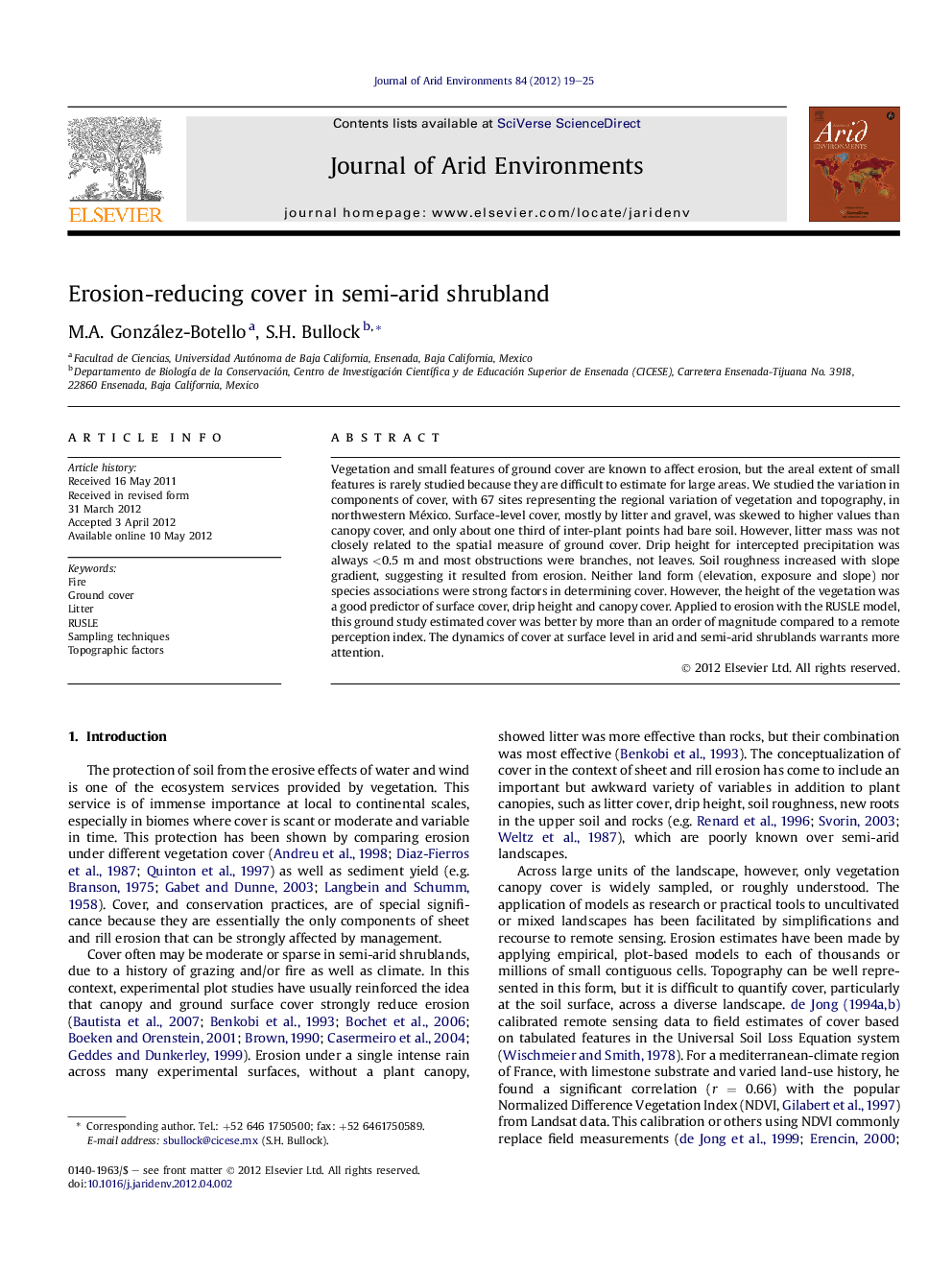| Article ID | Journal | Published Year | Pages | File Type |
|---|---|---|---|---|
| 4393268 | Journal of Arid Environments | 2012 | 7 Pages |
Vegetation and small features of ground cover are known to affect erosion, but the areal extent of small features is rarely studied because they are difficult to estimate for large areas. We studied the variation in components of cover, with 67 sites representing the regional variation of vegetation and topography, in northwestern México. Surface-level cover, mostly by litter and gravel, was skewed to higher values than canopy cover, and only about one third of inter-plant points had bare soil. However, litter mass was not closely related to the spatial measure of ground cover. Drip height for intercepted precipitation was always <0.5 m and most obstructions were branches, not leaves. Soil roughness increased with slope gradient, suggesting it resulted from erosion. Neither land form (elevation, exposure and slope) nor species associations were strong factors in determining cover. However, the height of the vegetation was a good predictor of surface cover, drip height and canopy cover. Applied to erosion with the RUSLE model, this ground study estimated cover was better by more than an order of magnitude compared to a remote perception index. The dynamics of cover at surface level in arid and semi-arid shrublands warrants more attention.
► In semi-arid scrub, litter protects more ground than the vegetation canopy. ► Erosion-reducing cover is more affected by vegetation development than topography. ► The extent and mass of litter are weakly related, probably driven by different processes. ► Soil roughness increases with slope, perhaps reflecting or contributing to erosion. ► Compared to remote perception, field measure of cover reduces erosion estimates by 94%.
